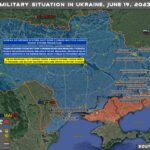
138822344510/the-transfiguration-in-modern-art-as-exodus
By DSS. NORMA P. DOLLAGA
Kasimbayan
Dn 7:9-10, 13-14
Ps 97:1-2, 5-6, 9 2
Pt 1:16-19
Mt 17:1-9
The scenario is preluded with a great revelation about who Jesus is. Peter‘s declaration about Jesus being a Messiah is commendable. Jesus foretells about his departure.
Resurrection is revealed through the transfiguration moment of Jesus. The historical figures of Moses and Elijah appeared – reminding and reconnecting the disciples about the historic role of Moses and Elijah in Israel’s life. The glorious image of the two is a historical reminder of their great roles in the history of Israel. Jesus was talking to the great men of Israel, and likewise, the disciples saw his glory.
Jesus brought Peter, James, and John to the high mountain. There, they witnessed an astounding image. They saw Jesus as a great figure in the history of Israel. They were “star-struck”, a secret was once again confirmed- that Jesus was standing along with great heroes of their faith journey and life as a people.
Transfiguration reflects and dramatizes the coming resurrection of Jesus as he anticipated his death at the hands of the Roman Empire, the most humiliating capital punishment – hanging on the cross.
Being a Messiah, as declared by Peter, is not just a prophetic office or a career path of Jesus. The messiah-ship is about faithfully fulfilling the aspiration of the people who for the longest time desired wholistic salvation and liberation from all forms of power that enslave and oppress them.
This Jesus, whom Peter declared as Messiah, lives with them. The disciples were the witnesses of the options he has taken, of choosing the narrow road of servanthood, of being one with the poor and the despised. He became poor himself. Borrowing the words of Pope Francis, without a doubt, he smelled like his sheep.
His life has been a great epitome of love. The love became flesh and dwelt among people. This love was well manifested in serving the people, by his compassion to make the blind see, deaf to hear, the bent over to rise, lame to walk, set the captives free, and sharply engaged the powers and principalities that caused the suffering of the many.
He dared to ask questions, subverted the technical interpretation of the law, fulfilled the essence of the law, and have been a trouble–maker for those who could not take his option.
It was very clear to Jesus whose side he must lean on. He sided with Truth, Justice, Peace, and Righteousness. The victims of injustice looked up to him, and the perpetrators of injustice looked down on him.
It was not an easy option. It was not an easy path. Perhaps like ordinary leaders, he, too, had some butterflies in his stomach during trying or stressful moments. But still, he proceeded with his mission. Like Moses and Elijah, they too had to endure the tests, the temptations of giving up from internal and external contradictions.
The transfiguration illustrates or demonstrates that resurrection and transformation are the radical offspring of death or putting an end to things that are no longer relevant. This revelation was given on top of a mountain.
On top of the mountain, he once again revealed himself to his disciples. “
“As they were coming down the mountain, Jesus instructed them, “Don’t tell anyone what you have seen, until the Son of Man has been raised from the dead.” (v.9) ![]()
Balik-Tanaw is a group blog of Promotion of Church People’s Response. The Lectionary Gospel reflection is an invitation for meditation, contemplation, and action. As we nurture our faith by committing ourselves to journey with the people, we also wish to nourish the perspective coming from the point of view of hope and struggle of the people. It is our constant longing that even as crisis intensifies, the faithful will continue to strengthen their commitment to love God and our neighbor by being one with the people in their dreams and aspirations. The Title of the Lectionary Reflection would be Balik –Tanaw , isang PAGNINILAY . It is about looking back (balik) or revisiting the narratives and stories from the Biblical text and seeing, reading, and reflecting on these with the current context (tanaw).




